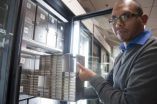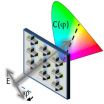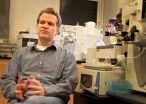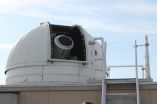(Press-News.org) Only 10 years ago, deciphering the genetic information from one individual in a matter of weeks to find a certain disease-causing genetic mutation would have been written off as science fiction.
It was the time of the Human Genome Project, and it had taken armies of sequencing robots working around the clock for almost a decade to unravel the complete sequence of the human genetic code – referred to as the genome – by churning out the DNA alphabet letter by letter.
Now a team headed by Michael Hammer from the University of Arizona applied Next Generation Genome Sequencing to decipher the entire DNA from a patient who had died from sudden unexplained epileptic death.
Not only did they find the likely culprit – a previously unknown mutation in a gene coding for a sodium channel protein in the central nervous system – but their findings offer some emotional relief and explanation to the patient's family in the absence of a medical diagnosis and any family history of similar disease. The research team published its results in the March issue of the American Journal of Human Genetics.
"If you have a small child with severe epilepsy, not knowing what is causing it is a big burden to carry for the family," said Michael Hammer, an associate professor in the UA's department of ecology and evolutionary biology and a research scientist at the UA's Arizona Research Labs. "It leaves a lot of open questions and sometimes even feelings of guilt."
Because the severity of the patient's condition, the absence of the disease in both parents and her younger sibling and no family history of epilepsy, Hammer and first author Krishna Veeramah ruled out an inherited genetic defect as the cause. Rather, they suspected a so-called de novo mutation, a "typo" in the genetic alphabet generated by pure happenstance, most likely in the paternal germ line.
"We were tasked with the search for the proverbial needle in a haystack," said Veeramah, a postdoctoral fellow in Hammer's lab. "To find a de novo mutation, we have to comb through the entire genome. In the old days, we could have generated a list of candidate genes and sequenced them one gene at a time. Unfortunately that's a lot of work, especially in the brain where you have thousands of genes that could potentially be involved in a process leading to a neurological disorder."
"The development of Next Generation Sequencing Technology in recent years provides a much more powerful approach to actually analyze all the genes at the same time. So that's what we wanted to do."
"We are looking at the level of the entire genome," Hammer added, "something that was not possible until very recently."
"For a neurological disorder like this, the cause could be a mutation in a particular gene; it could be a certain sequence that was rearranged; or it could be a sequence that was deleted or duplicated changing the number of gene copies."
"We all have variations in the number of copies of certain genes, but they're not necessarily bad," he explained. "But sometimes that variation can cause disease."
"For example, some percentage of previously unexplained intellectual disability has been found to be associated with genomic rearrangements."
In this case, the researchers did not find a smoking gun from looking at copy number variations, leaving point mutations or small insertions or deletions of DNA letters as a likely cause.
Using the sequencing technology capabilities of Complete Genomics, Inc., between 96 and 97 percent of the patient's DNA sequence, as well as the genomes of her parents and her sibling, was deciphered within a few weeks.
Veeramah pointed out that each one of the roughly 3 billion base pairs that make up the human DNA alphabet was covered by at least 50 reads.
"This is important because whole genome sequencing still makes a lot of errors so you have to double up on your efforts to get the accuracy you need."
The family's DNA sequences turned out to stray from the human reference genome in about 5 million places. This may sound like a lot, but in light of the fact that only about 2 percent of the human DNA sequence contains actual genes, most of those variations fall into non-coding regions of the genetic material.
In the next step, Hammer's team had to figure out what those variations meant. Using databases of known genes, they checked which were located in actual gene sequences and which would change the amino acid sequence of the respective protein they encoded. In the end, they were left with about 13,000 mutations.
They hoped that somewhere in that pool of candidates was that one mutation that had caused the girl's epilepsy and possibly led to her death.
To whittle down the number of possibilities, the team then screened for mutations that seemed to violate the laws of Mendelian inheritance.
"De novo mutations will look like they don't obey the rules by which we know genetic material is inherited," Veeramah explained. "The patient will have a variant that is not found in the parents or the sibling. We found 34 sites that fit this pattern."
On average, in one individual, only one spontaneous mutation springs up within the coding region of a gene. Therefore, finding 34 told the team that most of those mutations most likely were sequencing errors.
Veeramah said: "Ten of them had already been listed in public databases, meaning they occur in normal individuals and should not be disease-causing. They're probably just systematic artifacts of the sequencing process, so we could eliminate them."
The team sequenced the remaining 24 variations by standard methods, and as expected, only one turned out to be a real mutation. The variant, which was not previously associated with any human epilepsy disorders, consisted of a wrong letter in a gene that serves as the blueprint for a protein with an important role in how nerve cells communicate with each other.
"These channels perform extremely critical functions," Veeramah said, "which is illustrated by the fact that their structure is very similar from fruitflies to fish to lizards to humans. Just by looking at how highly conserved those proteins have remained over millions and millions of years of evolution, it is pretty clear that the mutation we found is a particularly damaging one that shouldn't really occur."
Identifying a mutation in a critical component of the nervous system in a patient afflicted with severe and otherwise unexplained epilepsy would have been reason enough to stop the study and declare the case closed.
"We decided to take it a step further and actually see if we could find out the exact consequences of that mutation," Veeramah said.
To that end, the team performed electrophysiological studies on this particular mutation. The researchers teamed up with geneticist Miriam Meisler at the University of Michigan to insert the faulty gene into cultured neural cells and studied what happened when they subjected the cells to a mild electric current, just as they would experience when stimulated by another nerve cell in the central nervous system.
"When the voltage is increased, there is a sudden opening of sodium channels," Veeramah said. "Shortly afterward, they close really quickly and the voltage goes back to normal. And that's essentially how normal neurons communicate, how electrical signals are sent around the brain and the body."
"In contrast, the mutant channel proteins opened as quickly as they should, but some of them failed to close quickly, and some didn't close at all," Veeramah explained. "All this results in the electrical signal not being turned off properly. These changes predicted increased neuronal excitability and seizures."
"The bottom line is that we can use whole genome sequencing to find mutations that underlie those severe cases of epilepsy and take it beyond the benchmark in the literature right now by doing functional studies to confirm that we have found the right mutation," Hammer said.
The Hammer lab plans to establish a diagnostics facility to make whole genome sequencing available to the clinical community in hopes to help children with early onset epilepsy and other rare undiagnosed disorders.
"We want to repeat this experiment with many more patients," Hammer said. "We are ready to accept DNA from patients and carry out this type of study."
Veeramah added: "Right now we are doing basic research to identify all the mutations involved. Down the line the goal is to design drugs that specifically target the affected pathways."
Hammer said at the current cost of about $5,000 per fully sequenced genome, or $1,000 to sequence all the known human genes, the new approach could prove cost-efficient, too.
"The regular tests these patients would run up during their lifetime would vastly outweigh the cost of a whole-genome sequencing experiment."
He added: "Once you know what causes the condition, you can begin to be informed about management. Finding cures certainly is in the longer-run picture, even though it is not an option at this point. Until then, families suffer because they're just sitting in the dark and wondering. Did something go wrong during pregnancy? Did I do something to cause the baby's disorder? Finding the faulty gene can provide a vast amount of relief for the family."
INFORMATION:
Genome sequencing finds unknown cause of epilepsy
UA researchers have identified a previously unknown mutation in a sodium channel protein as the likely cause of a severe form of epilepsy
2012-02-24
ELSE PRESS RELEASES FROM THIS DATE:
HotRussianBrides.com and RussianLoveMatch.com to Stream Live Beauty Pageant from Odessa, Ukraine on February 25
2012-02-24
Russian dating websites HotRussianBrides.com and RussianLoveMatch.com announced that both will live stream "Precious Pearl", a beauty pageant taking place in Odessa, Ukraine on February 25, 2012 at approximately 12:30pm Eastern Time.
Complete with choreographed dance numbers, a talent segment, and a fashion segment, the pageant will feature single Ukrainian women from around the country, all vying to be crowned Miss Precious Pearl. The event is coordinated by a local dating agency affiliate based in Odessa with branches all over Ukraine. This is the second ...
Naked mole-rats bear lifesaving clues
2012-02-24
Could blind, buck-toothed, finger-sized naked mole-rats harbor in their brain cells a survival secret that might lead to better heart attack or stroke treatments?
University of Illinois at Chicago biologist Thomas Park and colleagues at UIC and the University of Texas Heath Science Center at San Antonio think the subterranean lifestyle of the pasty-looking rodents may indeed hold clues to keeping brain cells alive and functioning when oxygen is scarce. The key may lie in how brain cells regulate their intake of calcium.
"Normally, calcium in brain cells does wonderful ...
A rainbow for the palm of your hand
2012-02-24
BUFFALO, N.Y. -- University at Buffalo engineers have developed a one-step, low-cost method to fabricate a polymer with extraordinary properties: When viewed from a single perspective, the polymer is rainbow-colored, reflecting many different wavelengths of light.
Used as a filter for light, this material could form the basis of handheld multispectral imaging devices that identify the "true color" of objects examined. An image of the material is available here: http://www.buffalo.edu/news/13214.
"Such portable technology could have applications in a wide range of fields, ...
Track and Field News: Felix Sanchez Sets Indoor World Record in Two Consecutive Races
2012-02-24
Felix Sanchez (also known as El Super Sanchez) is one of the most decorated 400m Hurdlers in history. To his name, he already has an Olympic Gold Medal, 2 Outdoor World Championships, 2 Pan American Championships and numerous other accolades. This past week, the 34 year old Sanchez made history again by breaking the Indoor World Record in two consecutive races by nearly half a second in each race.
The previous World Record of 49.73 seconds was set in 2010 by Sanchez as well. On February 4th, Sanchez competed in Mondeville, France, finishing his race in 49.25 seconds, ...
Metal nanoparticles shine with customizable color
2012-02-24
Cambridge, Mass. - February 23, 2012 – Engineers at Harvard have demonstrated a new kind of tunable color filter that uses optical nanoantennas to obtain precise control of color output.
Whereas a conventional color filter can only produce one fixed color, a single active filter under exposure to different types of light can produce a range of colors.
The advance has the potential for application in televisions and biological imaging, and could even be used to create invisible security tags to mark currency. The findings appear in the February issue of Nano Letters.
Kenneth ...
Whittard of Chelsea Releases Perfect 'Cuppa' Guide Ahead of Bumper Tea-Making Day - Mothering Sunday
2012-02-24
The UK Tea Council expects more than 165 million cups of tea to be drunk in the UK this Mothering Sunday. As the annual homage to Mothers approaches, millions of sons and daughters around the country are planning to serve breakfast in bed including the ultimate 'cuppa' for the celebrated women in their lives. Tea and coffee specialists Whittard of Chelsea, who have already identified a pre-Mother's Day tea selling surge, have today released their expert guide to making the perfect cuppa.
Every year, Whittard of Chelsea monitors the Mother's Day effect, estimated to be ...
Blood mystery solved
2012-02-24
You probably know your blood type: A, B, AB or O. You may even know if you're Rhesus positive or negative. But how about the Langereis blood type? Or the Junior blood type? Positive or negative? Most people have never even heard of these.
Yet this knowledge could be "a matter of life and death," says University of Vermont biologist Bryan Ballif.
While blood transfusion problems due to Langereis and Junior blood types are rare worldwide, several ethnic populations are at risk, Ballif notes. "More than 50,000 Japanese are thought to be Junior negative and may encounter ...
Healthy foods missing from stores in low-income black neighborhoods, UGA study finds
2012-02-24
Athens, Ga. – Most convenience stores have a wide variety of chips, colorful candies and bottles of sugar-sweetened carbonated beverages. While shoppers can buy calorie-heavy foods wrapped in pretty packages in these locations, what they usually can't find are the fresh produce, whole grains and low-fat dairy products necessary for a healthy diet.
These stores are the only nearby food source for millions of Americans living in what are called food deserts, because they are isolated from affordable healthy food. In recent studies, University of Georgia foods and nutrition ...
Preschools get disadvantaged children ready for the rigors of kindergarten
2012-02-24
Preschools help children prepare for the rigors of grade school—especially children who come from a minority family, a poor family, or whose parents don't provide high-quality interactions. The results of a new study of over 1,000 identical and fraternal twins, published in Psychological Science, a journal of the Association for Psychological Science, confirm that preschool programs are a good idea.
Of course, many children from poor families excel in school. But it's no secret that many do not. People used to think this had to do with the lower-quality schools in poor ...
NASA pinning down 'here' better than ever
2012-02-24
Before our Global Positioning System (GPS) navigation devices can tell us where we are, the satellites that make up the GPS need to know exactly where they are. For that, they rely on a network of sites that serve as "you are here" signs planted throughout the world. The catch is, the sites don't sit still because they're on a planet that isn't at rest, yet modern measurements require more and more accuracy in pinpointing where "here" is.
To meet this need, NASA is helping to lead an international effort to upgrade the four systems that supply this crucial location information. ...
LAST 30 PRESS RELEASES:
Heart-brain connection: international study reveals the role of the vagus nerve in keeping the heart young
Researchers identify Rb1 as a predictive biomarker for a new therapeutic strategy in some breast cancers
Survey reveals ethical gaps slowing AI adoption in pediatric surgery
Stimulant ADHD medications work differently than thought
AI overestimates how smart people are, according to HSE economists
HSE researchers create genome-wide map of quadruplexes
Scientists boost cell "powerhouses" to burn more calories
Automatic label checking: The missing step in making reliable medical AI
Low daily alcohol intake linked to 50% heightened mouth cancer risk in India
American Meteorological Society announces Rick Spinrad as 2026 President-Elect
Biomass-based carbon capture spotlighted in newly released global climate webinar recording
Illuminating invisible nano pollutants: advanced bioimaging tracks the full journey of emerging nanoscale contaminants in living systems
How does age affect recovery from spinal cord injury?
Novel AI tool offers prognosis for patients with head and neck cancer
Fathers’ microplastic exposure tied to their children’s metabolic problems
Research validates laboratory model for studying high-grade serous ovarian cancer
SIR 2026 delivers transformative breakthroughs in minimally invasive medicine to improve patient care
Stem Cell Reports most downloaded papers of 2025 highlight the breadth and impact of stem cell research
Oxford-led study estimates NHS spends around 3% of its primary and secondary care budget on the health impacts of heat and cold in England
A researcher’s long quest leads to a smart composite breakthrough
Urban wild bees act as “microbial sensors” of city health.
New study finds where you live affects recovery after a hip fracture
Forecasting the impact of fully automated vehicle adoption on US road traffic injuries
Alcohol-related hospitalizations from 2016 to 2022
Semaglutide and hospitalizations in patients with obesity and established cardiovascular disease
Researchers ‘listen in’ to embryo-mother interactions during implantation using a culture system replicating the womb lining
How changing your diet could help save the world
How to make AI truly scalable and reliable for real-time traffic assignment?
Beyond fragmented markets: A new framework for efficient and stable ride-pooling
Can shape priors make road perception more reliable for autonomous driving?
[Press-News.org] Genome sequencing finds unknown cause of epilepsyUA researchers have identified a previously unknown mutation in a sodium channel protein as the likely cause of a severe form of epilepsy






